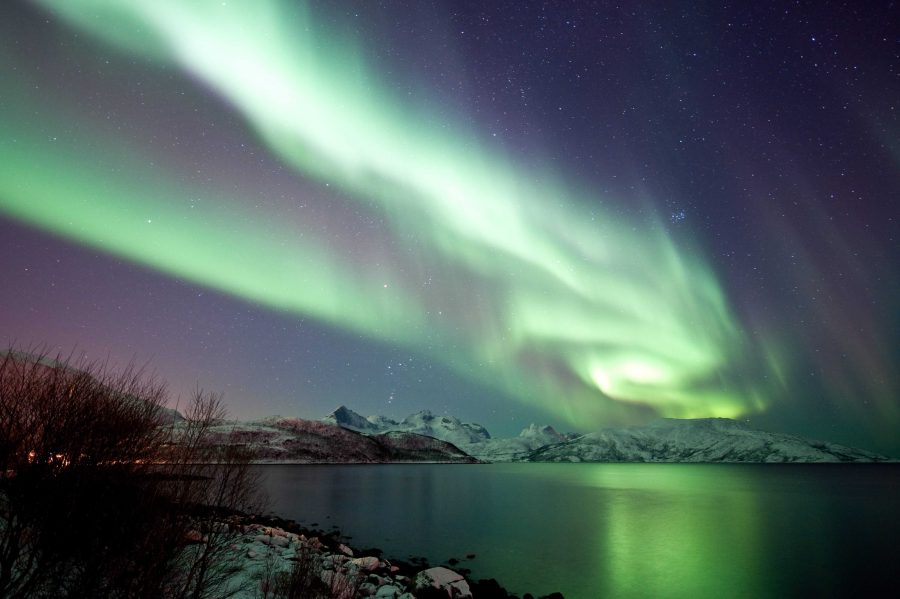A Glimpse of Starlight
Gaute Bruvik, Nordnorsk Reiseliv
The Northern Lights may vanish from the sky for the next decade.
The Northern Lights have been gracing people’s bucket lists for years, but this winter may be the last chance to see the glowing sky for more than a decade.
The Northern Lights are the result of solar activity; explosions on the sun send charged particles to the Earth’s atmosphere, where they are drawn to the North Pole. These particles collide with gas molecules along the way, releasing energy in the form of glowing, colorful light that can be seen in different places all over the world.
Scientists expect the lights to appear less frequently over the next ten to fifteen years. This is due to the changing number of visible sunspots due to the natural “heartbeat” of the sun. We are on the backside of the Solar Cycle 24 peak phase. This means the sunspot count is declining, making 2016 the last year with potential to experience big solar flares for at least a decade.
For many people, the Northern Lights are something they would either love to experience, or have already experienced and loved.
“[The Northern Lights] have definitely been something that has stuck with me my whole life, and I would very much like to see them again,” said Lisa Boardman Burnette, who saw the lights when she was eight at her home on Lake Erie. “I just remember my excited dad waking us up in the middle of the night to come outside in our PJs and look at the sky, and I was met with these glowing blue and green lights, like something I had never seen before.”
Burnette said her view was not as vivid as the views from the poles or Scandinavian countries, but still described it as magical.
Some of the best places to view of the lights are Alaska, Denmark, Scotland, Canada, Greenland, Finland, and Iceland. The Northern Lights are most visible during winter months as well, making this winter the last opportunity to see them for up to fifteen years.

Margot McLaughlin is a senior at Grady High School and is the associate managing editor for Lifestyle and Arts & Entertainment. Outside of The Southerner,...

